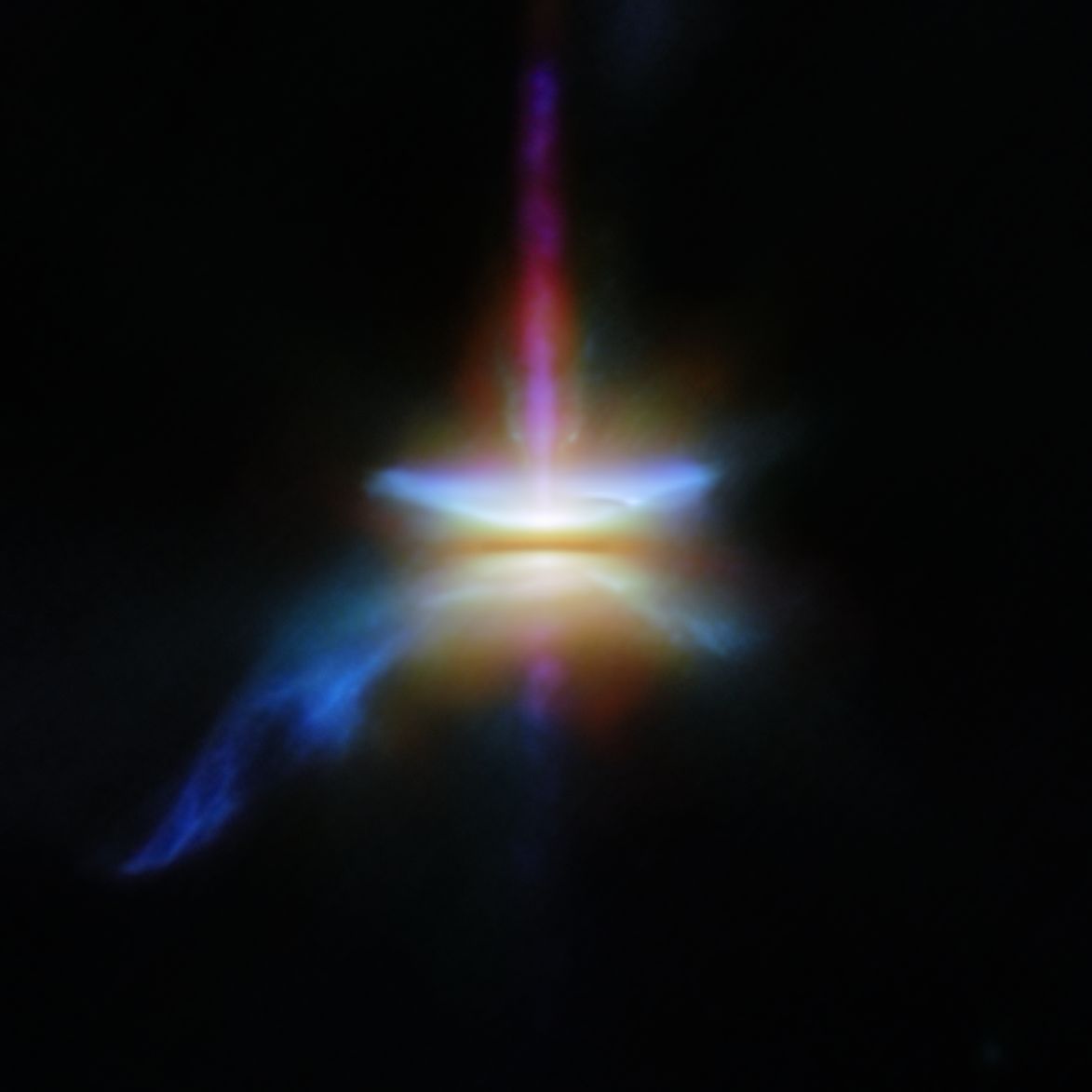กล้องโทรทรรศน์อวกาศเจมส์ เวบบ์ ถ่ายภาพสุดอลังการของ “HH 30” ที่เต็มไปด้วยฝุ่นและก๊าซ ซึ่งเป็นแหล่งกำเนิดดาวเคราะห์แห่งใหม่ ภาพนี้ช่วยให้นักวิทยาศาสตร์เข้าใจการก่อตัวของดาวเคราะห์มากขึ้น
HH 30 จานฝุ่นที่ล้อมรอบด้วยดาวฤกษ์อายุน้อย มองดูเหมือนจานที่วางตั้งขึ้น (protoplanetary disc) ที่มองเห็นจากด้านข้าง ซึ่งเป็นแหล่งกำเนิดดาวเคราะห์ ซึ่งกล้องเจมส์ เวบบ์ ร่วมมือกับ ฮับเบิล และ ALMA ช่วยกันถ่ายภาพ HH 30 ในมุมมองที่ต่างกัน ทำให้เห็นว่า ฝุ่นในจานนี้รวมตัวกันเป็นชั้นหนาแน่น และในที่สุดก็กลายเป็นดาวเคราะห์
นอกจากนี้ ยังพบ “ไอพ่น” พุ่งออกจากดาวฤกษ์ และมี “เนบิวลา” หรือกลุ่มก๊าซขนาดใหญ่ ที่สะท้อนแสงจากดาวฤกษ์ ทำให้ HH 30 ซึ่งอยู่ห่างจากโลกประมาณ 450 ปีแสง เป็นแหล่งกำเนิดดาวเคราะห์ที่น่าตื่นเต้น
ข้อมูลอ้างอิง: NASA/ESA/CSA
– Webb investigates a dusty and dynamic disc

